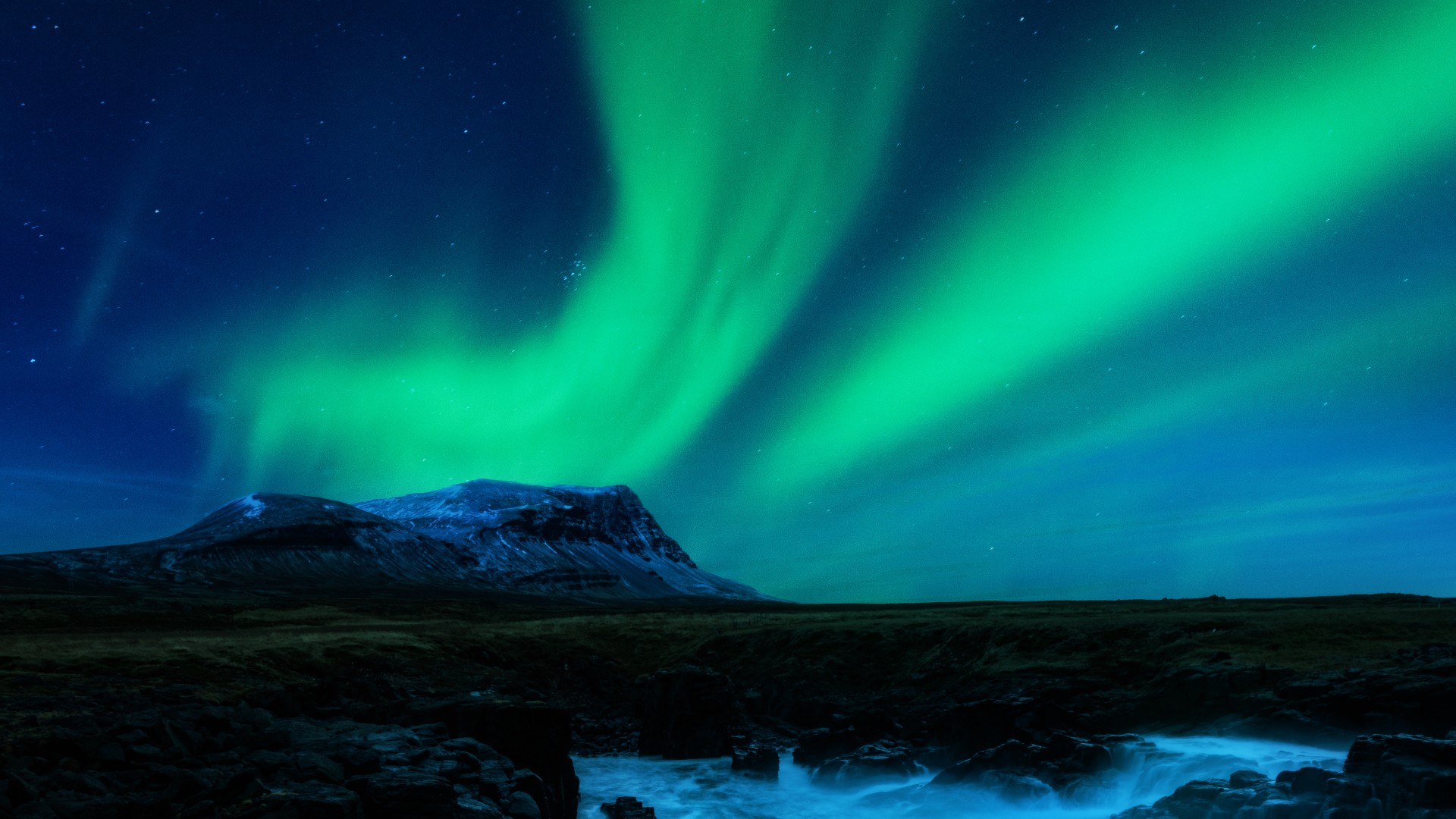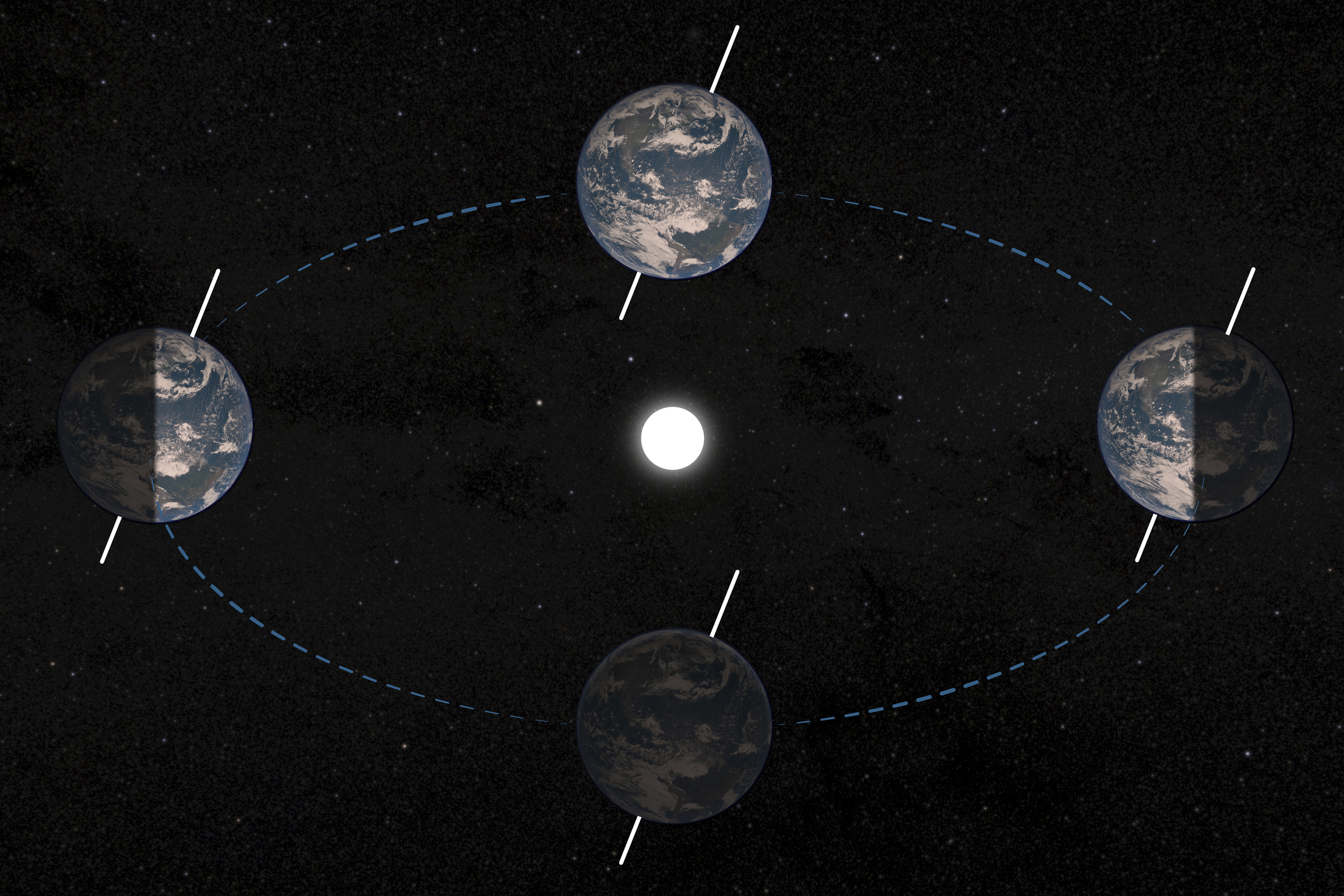
Longtime aurora watchers will know the Earth's two equinoxes — late March and late September — mark the most colorful times of the year. Aurora hunters claim that, to look to the night sky in search of these beautiful displays, the dates around the equinoxes are the best.
Science supports their wisdom. The data show that auroras peak around the two equinoxes and, on the other hand, auroras decline around June and December, the two solstices. The sun, of course, is not tied to Earth's rotation. So scientists have long tried to understand what ties geomagnetic storms — and the resulting auroras — to the calendar.
Their most common answers point to the alignment of Earth's magnetic field. Although Earth's magnetic poles don't match its geographic poles, they're still slanted with respect to the sun. Twice a year, around the equinoxes, Earth's orbit then brings this tilted field into prime position to receive the charged particles that cause the auroras.
Related: Northern lights (aurora borealis): What they are & how to see them
Read more: What is an equinox?
Scientists don't agree on a full-color picture of how auroras form, but they are certain auroras come from solar wind and its 'gusts,' like solar flares and coronal mass ejections. Charged particles stream away from the sun and wash over Earth, whose magnetic field draws them toward high latitudes. These high-energy particles crash into and excite the atoms of Earth's upper atmosphere, creating the bright displays that cascade across the sky.
Auroras are only one aspect of the tempests that these particles brew up as they blow over Earth. So-called geomagnetic storms surge in strength and number twice a year, indeed, around the equinoxes. According to data from the British Geological Survey, on average, a sizable magnetic storm happens on nearly twice as many days in March as in June or July.
In 1973, geophysicists Christopher Russell and Robert McPherron proposed what would become the most accepted explanation of why Earth experiences more magnetic activity at these times of year. Today, scientists call it the Russell-McPherron effect.
Get the Space.com Newsletter
Breaking space news, the latest updates on rocket launches, skywatching events and more!
Russell and McPherron determined that the answers lay in how the sun and Earth's respective magnetic fields meet each other. The tilt of Earth's magnetic field means that they're largely misaligned. As the solar wind comes across Earth, the disjunction deflects much of it away from the planet.
They looked at what scientists call the field's azimuthal component: The direction that, from Earth's perspective, goes up and down through the planet's poles. As Earth approaches the equinox in its orbit, Earth's azimuthal component lines up with the sun's.

In itself, this alignment wouldn't open Earth to the solar wind. However, the two magnetic fields end up pointing in opposite directions. The result is guided by similar physics to that which causes the opposing ends of two bar magnets to align. Around the equinoxes, more of the solar wind gets through, resulting in stronger geomagnetic activity — by extension, more brilliant auroras.
The Russell-McPherron effect is the most popular explanation among scientists, but it may not be the only cause. It's also known that, at the equinoxes, the Earth's magnetic poles fall into a right angle to the direction of the solar wind's flow, making the solar wind more potent. Scientists call this the "equinoctial effect."
Ultimately, there's still much scientists don't know about what causes auroras. They aren't sure what exactly happens between the solar wind and Earth's magnetic field to trigger them.
In the meantime, auroras' beautiful, unpredictable light shows continue to stream across the sky.
Follow us @Spacedotcom, or on Facebook and Instagram.
Join our Space Forums to keep talking space on the latest missions, night sky and more! And if you have a news tip, correction or comment, let us know at: community@space.com.

Rahul Rao is a graduate of New York University's SHERP and a freelance science writer, regularly covering physics, space, and infrastructure. His work has appeared in Gizmodo, Popular Science, Inverse, IEEE Spectrum, and Continuum. He enjoys riding trains for fun, and he has seen every surviving episode of Doctor Who. He holds a masters degree in science writing from New York University's Science, Health and Environmental Reporting Program (SHERP) and earned a bachelors degree from Vanderbilt University, where he studied English and physics.









